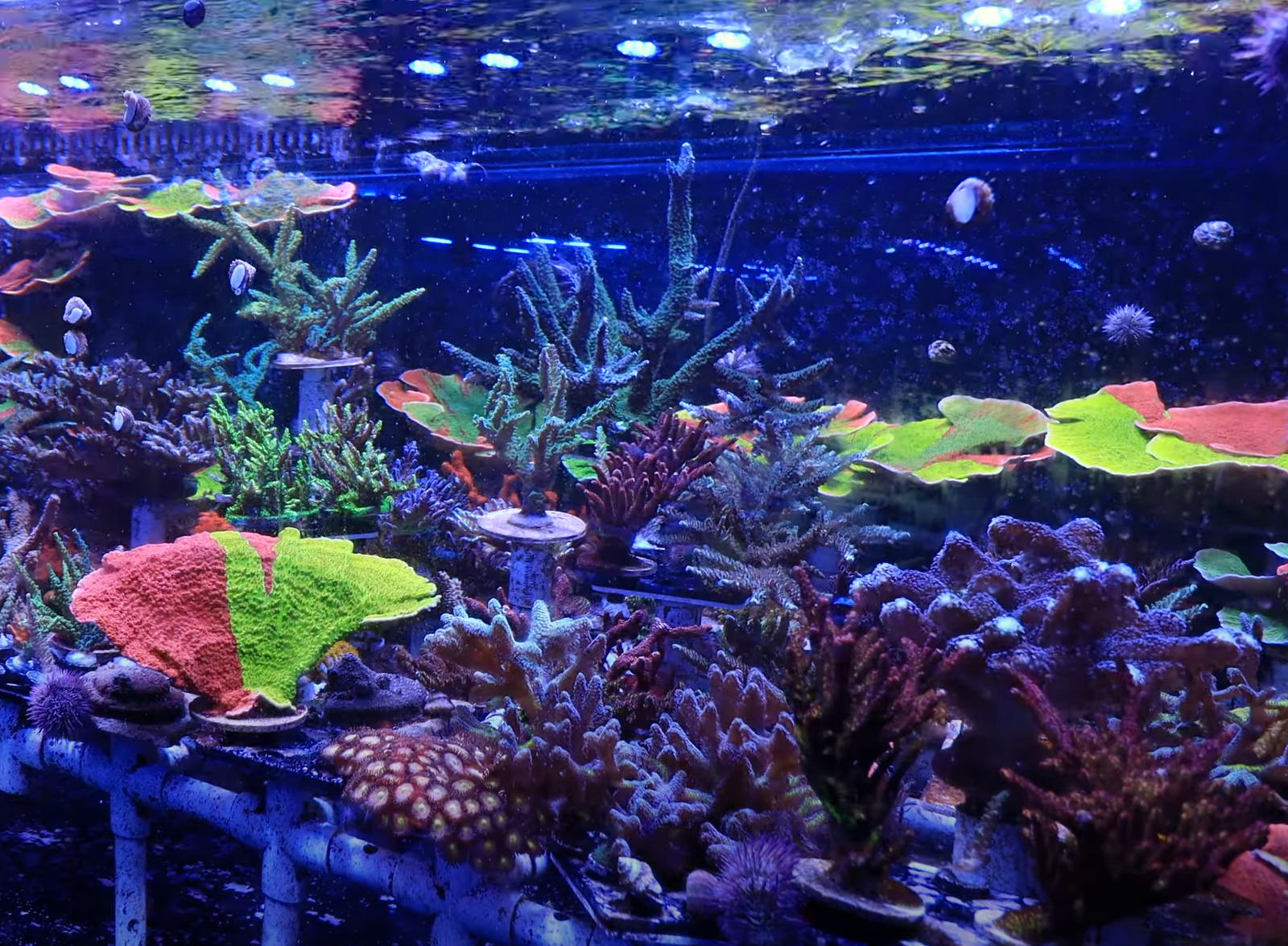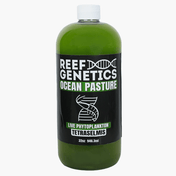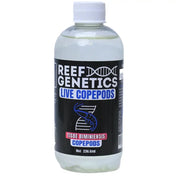SPS corals — short for Small Polyp Stony corals — are some of the most prized and challenging animals in the reef-keeping world. Known for their intricate branching shapes and vivid colors, SPS corals like Acropora, Montipora, and Seriatopora have become the hallmark of advanced reef tanks.
But with their beauty comes responsibility. SPS corals demand stable, pristine water conditions, strong flow, and intense lighting. Even minor swings in water chemistry can stress them, leading to tissue loss or color fading.
Whether you’re stepping into the SPS world for the first time or looking to improve your success, this guide will walk you through the essentials of SPS care: from water parameters and lighting to feeding, placement, fragging, and troubleshooting. Our goal is to help you enjoy the beauty of SPS corals with confidence — and keep them thriving long-term.
What Are SPS Corals?
SPS corals, or Small Polyp Stony corals, are a group of hard corals known for their small, tightly packed polyps and rigid calcium carbonate skeletons. Unlike soft corals, which have no skeleton, or LPS (Large Polyp Stony) corals, which have fleshy, larger polyps, SPS corals form dense colonies that often take on branching, plating, or encrusting shapes.
Some of the most well-known SPS coral genera include:
-
Acropora – iconic for their branching, tabling, or staghorn structures
-
Montipora – known for encrusting, plating, or branching growth
-
Seriatopora (Birdsnest corals) – delicate, bird’s-nest-like branches
-
Stylophora – compact, thick branches
-
Pocillopora – bushy, cauliflower-like colonies
These corals come from shallow, high-energy reef zones where they are exposed to intense light and strong, turbulent water flow. In the wild, they play a vital role in reef-building, providing structure and habitat for countless marine organisms.
While SPS corals are famous for their incredible colors — from neon greens and pinks to deep purples and blues — they’re also some of the most sensitive animals in the hobby. They thrive only in tanks with excellent water quality, stable parameters, and carefully controlled environments. That’s why SPS-dominant systems are often considered the pinnacle of reef keeping.
Ideal Water Parameters for SPS Success
When it comes to keeping SPS corals healthy, stable water parameters matter just as much — if not more — than hitting exact numbers. These corals are extremely sensitive to swings in alkalinity, calcium, temperature, and other key factors, so consistency is the name of the game.
Here’s what to aim for in an SPS-dominant reef tank:
-
Alkalinity (dKH): 7.5–9
Alkalinity helps maintain proper pH and supports coral skeleton growth. Sudden changes (even 0.5 dKH) can stress SPS, so use a dosing system if needed.
-
Calcium: 400–450 ppm
Calcium is essential for building the calcium carbonate skeleton. Make sure levels stay stable, especially if you have fast-growing species like Acropora.
-
Magnesium: 1250–1350 ppm
Magnesium helps balance calcium and alkalinity. Low magnesium can make it difficult to maintain the other two.
-
Nitrate: 2–10 ppm
SPS corals need a little nitrate for color and growth — but too much can brown them out, and too little can starve them.
-
Phosphate: 0.02–0.07 ppm
Like nitrate, phosphate supports coral health at low levels, but excess phosphate can fuel algae and hurt SPS coloration.
-
Salinity: 1.025–1.026
Measured as specific gravity, keep salinity stable using an auto top-off (ATO) system.
-
pH: 8.1–8.4
Higher pH (~8.3) promotes better skeletal growth and overall health.
-
Temperature: 76–78°F (24–26°C)
Avoid temperature swings and monitor with a reliable heater and controller.
Lighting Requirements for SPS Corals
Lighting is one of the most critical factors in keeping SPS corals healthy, colorful, and growing. In their natural reef habitat, SPS corals are exposed to intense sunlight in shallow, clear waters — and they need similar conditions in your tank.
Here’s what to know:
-
PAR Range: 250–450 PAR
Most SPS species thrive within this range, depending on the coral type and placement. Acropora often prefers higher PAR (350–450), while Montipora can do well at slightly lower levels.
-
Spectrum: Blue-heavy light enhances coloration, while a balanced mix of blue and white supports both growth and color. Many reefers run a “blue-dominant” schedule for aesthetics and coral health.
-
Lighting Types:
-
LED (Radion, Hydra, Kessil) — Highly controllable, customizable spectrum, energy efficient
-
T5 Fluorescent — Even light spread, good coral coloration, often paired with LEDs
-
Metal Halide — Intense output, excellent growth, but generates heat and uses more power
-
LED (Radion, Hydra, Kessil) — Highly controllable, customizable spectrum, energy efficient
- Light Acclimation: When adding new SPS corals, acclimate them slowly to intense light. Start them in lower PAR areas or use a light-reduction mode for 1–2 weeks, gradually increasing intensity to avoid bleaching.
Water Flow Needs
Strong, dynamic water flow is just as important as lighting when it comes to keeping SPS corals healthy. On natural reefs, SPS corals live in high-energy zones with constant, turbulent water movement. In your aquarium, you’ll need to replicate that environment.
Here’s how to get it right:
-
Flow Strength: High, random flow — SPS corals depend on strong currents to deliver oxygen and nutrients, remove waste, and keep their tissues clean. Low or stagnant flow can lead to tissue recession or algae buildup.
-
Flow Pattern: Avoid direct, laminar streams. Instead, aim for chaotic, variable movement that mimics ocean turbulence. This helps ensure all parts of the coral colony receive flow.
-
Equipment Recommendations:
-
Wave makers & powerheads: Ecotech MP40/MP60, Reef Octopus Octo Pulse, Sicce XStream, Tunze — placed strategically to create random flow.
-
Controllers: Use with wave makers to create variable, pulsing patterns.
-
Wave makers & powerheads: Ecotech MP40/MP60, Reef Octopus Octo Pulse, Sicce XStream, Tunze — placed strategically to create random flow.
- Placement Tips: Watch coral behavior. If polyps are fully extended and swaying gently, you’re on target. If they’re retracted or tissue is peeling, adjust flow direction or intensity.
Feeding SPS Corals
SPS corals get most of their energy from photosynthesis thanks to the zooxanthellae living in their tissues. But supplemental feeding can offer valuable benefits — it helps improve coloration, boost tissue health, and support growth, especially in low-nutrient reef tanks. Think of feeding as an enhancer, not a replacement for good lighting and water quality.
When it comes to what to feed, SPS corals prefer fine particle foods they can absorb easily. Some of the most effective options include:
-
Powdered coral foods like Reef Roids or Benepets
-
Amino acid supplements to support tissue and coloration
-
Phytoplankton or zooplankton, depending on system and coral type, we currently feed Reef Genetics Royal Flush phytoplankton
There are two main feeding methods, and which you choose depends on your tank’s needs and your routine.
-
Broadcast feeding involves dispersing food throughout the tank with pumps running, letting corals capture particles from the flow.
-
Target feeding is done by briefly turning off pumps and gently applying food near coral colonies using a pipette or baster.
Most SPS tanks do well with feeding 1–3 times per week. Just remember: while feeding helps your corals, it also adds nutrients to your system. Regular testing for nitrate and phosphate is crucial to avoid algae problems or nutrient imbalances.
Placement Tips for SPS Corals
Finding the right placement for your SPS corals is essential for their success. These corals thrive in areas of the tank where they receive both strong light and turbulent water flow, similar to their natural habitats on shallow reef crests. But it’s not just about sticking them high on the rockwork — thoughtful positioning can make the difference between thriving colonies and stressed-out frags.
Start by observing your tank’s layout. Where are the areas of highest PAR? Where does flow bounce and create random currents, rather than a single, blasting jet? These are the prime spots for many SPS species, especially Acropora.
At the same time, keep these practical tips in mind:
-
Leave room to grow. SPS corals can encrust and branch faster than you think. Avoid crowding, which can lead to shading or aggressive chemical warfare.
-
Secure the frag. Use coral glue or epoxy to firmly mount the frag on stable rock. Snails, hermit crabs, and fish can easily knock over a loose frag, especially in high flow.
-
Start low if unsure. If you’re acclimating a new frag, consider starting it on a frag rack or sandbed to observe how it responds to light and flow before moving it to a permanent spot.
It’s always wise to check on your corals regularly after placement. Look for extended polyps and good coloration as signs of happiness. If you notice retracted polyps or pale colors, adjust their location, flow exposure, or light intensity.
Fragging SPS Corals
Fragging SPS corals is both an art and a science. Unlike soft corals or LPS, which can sometimes be split with a razor or scalpel, SPS corals require precision and care to avoid damaging delicate tissue or the mother colony.
The first step is choosing the right time. Only frag healthy, well-established colonies — ideally ones that have been thriving in your system for several months. Avoid cutting freshly added or recovering corals, as they’re more prone to stress.
You’ll need the right tools for the job:
-
Bone cutters or a coral band saw for clean, controlled cuts
-
Coral glue or reef-safe epoxy to secure frags to plugs or rubble
-
Frag plugs, disks, or small rocks as mounting bases
Once you’ve made a clean cut, dip or rinse the frag in clean saltwater to wash away slime or debris. Then mount it carefully, making sure the frag is stable and upright. Let the glue cure outside the tank for a few minutes before placing it back in.
Common Mistake: Many hobbyists rush frag recovery by placing new frags directly into high light and high flow. Instead, start frags in moderate areas, allowing them to heal and reattach before gradually moving them to more intense zones.
Over the next few weeks, monitor for polyp extension and new encrusting tissue at the frag base — a sure sign your coral is settling in and on its way to becoming a thriving colony.
Troubleshooting SPS Coral Problems
Even with the best care, SPS corals can sometimes show signs of stress — and early detection is key to saving them. Instead of thinking only in terms of parameters, approach troubleshooting like a reef detective: observing behavior, color, and growth clues to figure out what’s going wrong.
Some of the most common SPS coral issues include:
-
Browning: Often caused by elevated nutrients (nitrate or phosphate), insufficient light, or poor flow. Corals may retain tissue but lose vibrant coloration.
-
Bleaching or paling: Usually from too much light, sudden parameter swings, or heat stress. You may notice the coral turning white or translucent.
-
STN / RTN (slow or rapid tissue necrosis): Sudden or gradual tissue loss, often linked to instability (alkalinity swings, salinity shifts) or bacterial infections.
-
Pests: Acropora-eating flatworms (AEFW), red bugs, or nudibranchs can silently damage colonies if undetected.
Unlike earlier sections, let’s stay all-narrative here:
To troubleshoot, start by checking your water parameters. Has alkalinity dropped suddenly? Is temperature stable? Next, evaluate lighting — did you recently adjust intensity or change fixtures? Then, observe flow patterns: are dead spots forming, or has a powerhead failed?
If pests are suspected, carefully inspect coral tips and bases, or use a coral dip to reveal hidden hitchhikers. For tissue loss events, fragging the healthy parts of a colony may sometimes save it, while improving system stability long-term.
Above all, remember: SPS corals often thrive or decline based on consistency, not perfection. Small, proactive changes can often reverse issues before they escalate.
Our Approach at Top Shelf Aquatics
At Top Shelf Aquatics, SPS coral care isn’t just a process — it’s a passion backed by science, precision, and years of hands-on experience. Every coral that passes through our farm is nurtured under carefully monitored conditions to ensure it’s healthy, vibrant, and ready for your reef.
We maintain over 30,000 gallons of farmed reef systems, where SPS colonies are grown under premium lighting setups like Ecotech Radions and supplemented with T5s or halides to balance growth and color. Our flow systems combine high-velocity wave makers, like Ecotech MP40s and Octo Pulse pumps, to replicate natural, turbulent reef environments.
But what truly sets our approach apart is the level of detail:
-
Daily parameter checks — alkalinity, calcium, magnesium, salinity, and pH are monitored with laboratory-grade equipment to maintain rock-solid stability.
-
Nutrient management — we run nutrient-controlled systems, balancing export (via skimmers and refugiums) with controlled nutrient input from coral feeding and fish load.
-
Selective propagation — our SPS frags are cut with precision bone cutters or coral saws, mounted on pre-soaked frag plugs, and given recovery time under moderate conditions before being offered for sale.
Beyond the equipment, it’s our team of dedicated aquarists and marine biologists who make the difference — constantly observing coral health, coloration, and growth to ensure every piece leaving our facility is at its best.
Frequently Asked Questions
How fast do SPS corals grow, really?
It depends on the species and system, but even under ideal conditions, SPS corals are generally slow growers at first. Montipora can plate out or encrust noticeably in a few weeks, while Acropora often “settle” for months before putting on vertical growth. Think of SPS as marathoners, not sprinters — patience and consistency pay off.
What’s the best SPS coral for a beginner who’s nervous?
For a beginner stepping into SPS, Montipora capricornis (plating Monti), Montipora digitata, and Birdsnest (Seriatopora) are fantastic choices. They’re relatively forgiving, resilient to small mistakes, and provide rewarding color and growth. We usually recommend staying away from Acropora at first — they’re beautiful but notoriously picky.
How can I get intense coloration like I see in photos?
True coloration comes from a mix of things:
-
Proper light spectrum (blue-heavy) and intensity
-
Slightly elevated nutrients (don’t strip the tank to zero)
-
Regular dosing of trace elements like potassium, iodine, and iron
-
Careful, consistent feeding with amino acids or fine coral foods
The secret? Avoid chasing numbers, and focus on overall coral health. Stress, even if nutrients or light are “perfect,” will mute colors.
How do I know if my flow setup is right?
Good SPS flow is turbulent, random, and strong enough to keep detritus suspended. Watch your coral’s polyps: if they’re extended and dancing gently, you’re close. If they’re retracted or the skeleton is exposed, back off. Bonus tip: periodically check the undersides of colonies for buildup — that’s where dead zones sneak in.
Can I mix SPS, LPS, and soft corals in one tank?
Yes, but it’s an art. You’ll need to:
-
Arrange your aquascape to give each group its preferred conditions
-
Run carbon to help mitigate chemical warfare
-
Monitor for stinging sweeper tentacles (especially from LPS)
-
Be ready to trim back fast-growing SPS that might shade neighbors
What should I do when introducing a new SPS frag?
Start with light and flow acclimation. Place the frag on a lower rack or sandbed under moderate light, or use a dimmed light schedule for 1–2 weeks. After that, move it gradually to its final high-light spot. Always dip new frags to check for pests like Acropora-eating flatworms or red bugs — prevention is easier than rescue.
What are the most common mistakes people make with SPS?
-
Chasing numbers instead of focusing on stability
-
Cranking up light too quickly
-
Starving the tank by running ultra-low nutrients
-
Ignoring pests until they’ve caused major damage
-
Underestimating the importance of flow (or flow patterns)
Final Thoughts: Bringing SPS Corals Into Your Reef
SPS corals are the crown jewels of the reef-keeping world — stunning, challenging, and incredibly rewarding when thriving. Whether you’re a seasoned hobbyist or just starting your SPS journey, remember that success comes down to a simple formula: stability, observation, and patience.
At Top Shelf Aquatics, we’re proud to offer one of the most carefully grown and sustainably aquacultured SPS collections available. Every frag we ship has been nurtured under precise conditions, backed by our passion for advancing the reefing hobby.
Have questions or need guidance on building your dream SPS reef? Our team is here to help. Reach out anytime — we love connecting with fellow reef enthusiasts.



















